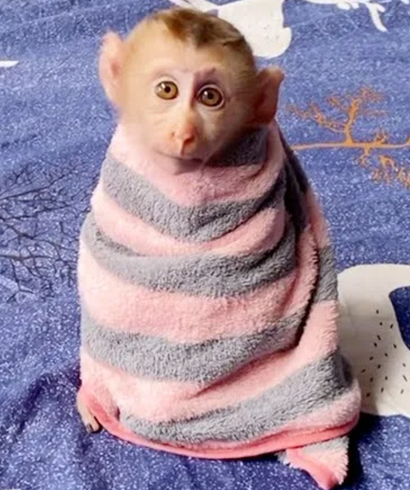
The Javan rhinoceros (Rhinoceros sondaicus), also known as the Sunda rhinoceros or lesser one-horned rhinoceros, is one of the most endangered large mammals in the world. It is a member of the Rhinocerotidae family and is native to Southeast Asia. Here are some detailed characteristics and information about the Javan rhino:
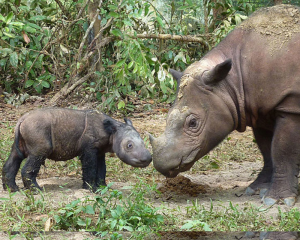
Physical Characteristics
Size: The Javan rhino is similar in size to the Indian rhino but is slightly smaller. Adults typically weigh between 900 to 2,300 kilograms (2,000 to 5,100 pounds) and have a length of about 3 to 3.2 meters (10 to 10.5 feet) with a height of 1.4 to 1.7 meters (4.6 to 5.6 feet) at the shoulder.
Appearance: The Javan rhino has a thick, gray skin that forms loose folds, giving it an armored appearance. Unlike other rhino species, it has only a single horn, which is usually less than 25 centimeters (10 inches) in length and can be absent in females. This horn is made of keratin, the same material as human nails and hair.
Skin: The skin has a mosaic pattern of large, thick plates separated by deep folds, which provides protection against dense vegetation and predators.
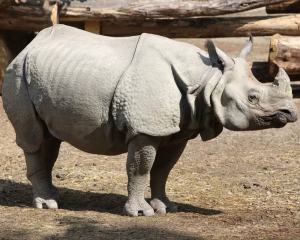
Behavior
Habitat: Historically, Javan rhinos were found in lowland rainforests, wet grasslands, and large floodplains across Southeast Asia. Today, they are confined to Ujung Kulon National Park on the western tip of Java, Indonesia. This area provides the dense, tropical rainforest habitat that they require.
Diet: Javan rhinos are herbivores and primarily browsers, feeding on a variety of leaves, shoots, twigs, and fruits. They prefer forest plants and tend to consume a large amount of foliage.
Social Structure: Javan rhinos are generally solitary animals, with the exception of mothers with their calves. They are known to have large home ranges, and males tend to be more territorial than females.
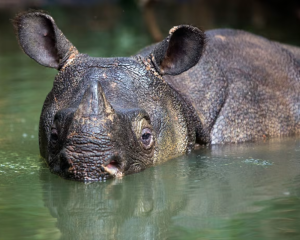
Conservation Status
Population: The Javan rhino is critically endangered, with only about 72 individuals estimated to remain in the wild, all of which are located in Ujung Kulon National Park. This makes them one of the rarest large mammals on Earth.
Threats: The main threats to the Javan rhino include habitat loss due to human encroachment and natural disasters, such as volcanic eruptions and tsunamis, which could decimate the entire population. Additionally, the limited genetic diversity due to the small population size poses a significant risk to their long-term survival. Poaching for their horn, though less common than for other rhino species, has historically contributed to their decline.
Conservation Efforts: Conservation efforts for the Javan rhino focus on protecting their habitat, preventing poaching, and monitoring the population through camera traps and field surveys. The Indonesian government and various international conservation organizations are working together to manage and protect Ujung Kulon National Park. There have been discussions about creating a second habitat site to reduce the risk of a single catastrophic event wiping out the entire population.
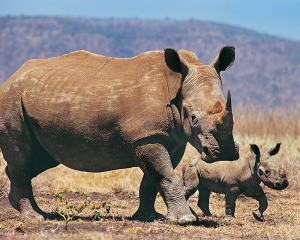
Importance
The Javan rhino is a keystone species in its ecosystem, playing a crucial role in maintaining the ecological balance. As a browser, it helps shape the vegetation structure of the rainforest, which in turn supports a diverse range of other species. The conservation of the Javan rhino is not only important for the species itself but also for the preservation of the biodiversity of the region. Saving the Javan rhino is critical for maintaining the health of the forest ecosystems they inhabit.
